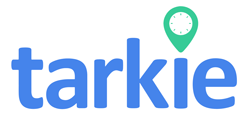Have you ever thought about how much human error in tracking attendance costs your business? In the Philippines, companies are turning to automated attendance systems. These systems are changing the game by cutting down on errors. Old ways of tracking attendance are often wrong, leading to trust issues and problems with reporting.
By using advanced time and attendance software, businesses can improve how they manage their workforce. This ensures they report accurately and follow local labor laws.
With more complex workforce rules, relying only on manual methods is no longer enough. Automated attendance systems make tracking data easier and provide clear records. This helps companies stay compliant without much effort. Many businesses are seeing the benefits of less error and better accuracy, making the switch to automation essential.
Key Takeaways
- Automated attendance systems drastically reduce human error in attendance tracking.
- Compliance reporting becomes seamless with accurate and auditable attendance records.
- Investment in time and attendance software enhances overall workforce management efficiency.
- Real-time data collection tools allow for immediate adjustments and proactive workforce planning.
- Adopting automated solutions can lead to significant cost savings and reduce compliance-related fines.
The Growing Need for Automated Attendance Systems
Automation in human resources is growing fast. Small to medium-sized enterprises (SMEs) in the Philippines face old timekeeping methods. These methods can cause problems with following rules.
About 80% of companies still use manual attendance. This can lead to mistakes, with up to 8% error rates. Such errors can cause big problems with pay and following rules.
Businesses lose about $11 billion a year to employee time theft. This is because of practices like buddy punching. As companies grow, they see that old systems don’t work anymore. Switching to automated systems cuts down errors almost to zero and makes work more efficient.
Automated systems collect data in a structured way. This makes processes smoother and saves time. For a company with 100 employees, this can save about 25 hours a day. This means big savings in costs, up to 50% in admin expenses.
Automated systems also make work more efficient. Companies can see how attendance patterns change. This helps them solve problems quickly. Employees like getting reminders about their schedules, with 70% saying they appreciate it.
In schools, real-time attendance data helps solve issues fast. Automated systems also make it easier to communicate with parents. This leads to better parent involvement and better results for students.
| Challenge | Manual Systems | Automated Attendance Systems |
|---|---|---|
| Error Rate | Up to 8% | Nearly 0% |
| Time Lost Due to Time Theft | Approx. $11 billion/year | Reduced with security features |
| Administrative Costs | Varies | Cut by up to 50% |
| Overall Efficiency Increase | Varies | Up to 25% |
| Employee Satisfaction | Varies | Boosted by 30% through self-service |
Using automated attendance systems helps companies make better decisions faster. With more complex labor laws, it’s clear that automating attendance is key for accuracy and following rules.
The Impact of Manual Attendance Tracking on Businesses
Manual attendance tracking has a big impact on how businesses manage their workforce. Using old methods like paper timesheets and manual entries leads to many errors in reporting. Almost 80% of employee timesheets need to be fixed.
This causes a lot of problems for both employees and HR teams. It makes things less efficient and frustrating for everyone.
In the Philippines, old-school retail stores struggle with tracking attendance correctly. The costs are huge, with time theft costing businesses $11 billion a year. “Buddy punching” alone costs around $373 million yearly.
There’s a big need for businesses to switch to automated attendance tracking. This can help solve these problems.
Also, employee absences cost about $2,660 per shift worker each year. This not only wastes money but can also lead to big legal issues. Companies using old attendance systems spend a lot of time on paperwork.
Switching to automated systems can cut down on mistakes. This makes payroll more accurate and reduces errors by up to 25%.
![]()
Using automated attendance management solves many problems. It also helps businesses follow labor laws better. Mistakes in reporting can cause delays in payroll, leading to financial and administrative headaches.
By using good attendance systems, businesses can see big benefits. They can reduce errors, make employees happier, and work more efficiently.
Key Features of Attendance Systems
Automated attendance systems make managing employee hours easier. They offer features like real-time data collection. This lets HR teams see who’s in and who’s not right away.
They can then fix staffing problems fast. This keeps things running smoothly.
Automated notifications are another big plus. They send alerts to managers and employees about who’s missing or who’s late. This helps everyone stay on track and be more punctual.
Many places see a 25% boost in being on time after using these systems.
Working with other HR tools also helps a lot. It cuts down on mistakes by about 45%. This makes everything run better and helps follow the law better.
Here’s a detailed overview of the key features in attendance systems:
| Feature | Description | Benefits |
|---|---|---|
| Real-Time Data Collection | Instantly updates attendance records as employees clock in or out. | Enhances decision-making and operational efficiency. |
| Automated Notifications | Alerts regarding absences or schedule changes sent to relevant personnel. | Increases employee accountability and engagement. |
| Integration with HR Tools | Links attendance systems with existing HR management software. | Reduces manual entry errors; saves time on data management. |
| Mobile Compatibility | Allows employees to clock in/out via their mobile devices. | Supports remote work and enhances employee satisfaction. |
| Geolocation Tracking | Verifies employee location during clock-ins. | Improves compliance and accuracy in attendance recording. |
| Customizable Alerts | Setting notifications for specific attendance scenarios. | Allows for quick responses to attendance breaches. |
Real-Time Data Collection for Error Reduction
Real-time data collection changes how we track employee attendance. It cuts down on errors from old ways of doing things. Now, employees can clock in and report absences easily with mobile apps. This makes HR teams better at handling attendance problems.
This new way of tracking has big benefits. It leads to a 30% reduction in error rates for attendance. Also, there’s a 25% decrease in legal fights over work hours. This is because it follows labor laws better.

| Benefit | Impact Percentage |
|---|---|
| Error Reduction in Attendance Reporting | 30% |
| Decrease in Legal Challenges | 25% |
| Reduction in Wage Disputes | 40% |
| Decrease in Over/Under Payment Instances | 20% |
| Time Saved on Manual Auditing | 50% |
| Speed of Identifying Discrepancies | 75% |
Using real-time data in attendance systems makes payroll more accurate. This makes employees happier with their pay, improving their satisfaction by 35%. It also cuts down on fraud risks by about 45%.
These systems help keep track of work hours and find patterns of absence. This lets companies manage schedules better and use resources more efficiently. It can even increase productivity by up to 15%.
Automated Attendance Systems for Compliance Reporting
In the Philippines, keeping accurate records of employee attendance is key. Labor laws demand precise and easy-to-access attendance records. Automated attendance systems make this easier, ensuring all attendance data is recorded correctly.
These systems help businesses stay compliant, avoiding fines and disputes. They offer automated time reporting and keep detailed records. This reduces errors by up to 90%.
Manual errors can lead to fines of $1,000 to $50,000. Businesses can save 2-5% of payroll by stopping ‘buddy punching’ fraud. They also save about 2 hours a week per employee on attendance tracking.
Using a central dashboard improves reporting by up to 95%. Automated systems also cut payroll processing time in half. This boosts productivity by about 20% after setup.
In short, automated attendance systems are vital for compliance reporting. They meet labor laws, improve accuracy, and boost efficiency. Companies using these systems manage risks and enhance employee management.
Benefits of Implementing Automated Attendance Systems
Companies that use automated attendance systems see big improvements. They get more accurate records of who’s working. This is key for making sure payroll is right.
These systems cut down on mistakes made when tracking hours by hand. They make sure the hours worked match what’s paid out. This builds trust with employees.
Improved Accuracy in Employee Attendance
Automated systems make attendance records much more reliable. This helps managers make better decisions and handle staff more efficiently. Having accurate records is vital, for example, when following rules and getting certified.
Enhanced Payroll Processing
Payroll gets a lot faster with these systems. They can make payroll work much quicker. This saves a lot of time and money.
Before, it took a lot of hours to make reports. Now, it’s just a few minutes. This is great for companies with different work setups. They can handle various attendance needs easily.

Cost Efficiency Through Automated Solutions
Automated attendance systems offer big benefits for businesses looking to save money. They make processes smoother and cut down on paperwork. This lets companies focus on big plans instead of daily tasks. They also lower the chance of mistakes in payroll and keep up with rules.
Reducing Administrative Workload
Automated systems greatly reduce time spent on paperwork. They can cut down on time theft by 40% by getting rid of old tracking methods. This saves about 4.5 hours a week for each employee, freeing them up for more important tasks.
Companies using these systems also see a 30% drop in how long it takes to handle payroll. This means HR teams have less work to do.
Mitigating Financial Risks Due to Errors
Automating payroll can greatly lower financial risks. Mistakes in payments can lead to big fines, costing thousands. By using automated systems, companies can save up to £120,000 a year by following rules better.
They also avoid average claims of up to £25,000. This shows how important it is to invest in good attendance systems.
| Aspect | Manual Process | Automated System | Potential Savings |
|---|---|---|---|
| Time spent on payroll processing | 80 hours/year | 16 hours/year | £7,800 per location |
| Risk of payroll errors | High (1-2% error rate) | Low (33% error reduction) | Up to £120,000/year |
| Time theft | High | Reduced by 40% | £74,880/year for 100 employees |
| Administrative workload | High | Significantly reduced | N/A |
In short, using automated attendance systems makes businesses run better. It gets rid of a lot of the hassle of paperwork and lowers financial risks. This leads to lasting success for companies.
How Automation Supports Regulatory Compliance
Automated attendance systems are key in keeping up with rules, like in the Philippines. They make it easy to keep accurate records, which are vital for audits. These records help businesses show they’re in line with rules, reducing the chance of fines.
Maintaining Accurate Records for Audits
Keeping accurate records is essential for managing attendance well. Companies with automated systems are 1.4 times more likely to follow labor laws than those without. This accuracy helps avoid legal issues and reduces risks of breaking labor laws.
According to Nucleus Research, 43% of companies struggle with time and attendance. This can lead to big fines. The average fine for breaking rules is about $1,027 per issue, making it crucial to use systems that make record-keeping easier.
Staying Updated on Labor Laws
Automated systems help businesses keep up with labor laws. HR experts say these systems lower the risk of legal problems. In fact, 74% of HR pros see a positive effect from these technologies.
This proactive approach helps avoid fines and the average yearly cost of not following rules, about $1,100 per employee. Companies using automated time tracking see 33% fewer compliance issues than those using old methods.

| Metrics | Manual Methods | Automated Solutions |
|---|---|---|
| Full Compliance Likelihood | 1 | 1.4 |
| Average Penalty per Violation | $1,027 | None |
| Cost of Non-Compliance per Employee | $1,100 | Minimized |
| Non-Compliance Rate | Higher | 33% Lower |
Using automated attendance systems helps businesses be open and trustworthy. It makes dealing with regulatory compliance and labor laws easier.
For more info on how automated systems can help, check this comprehensive guide.
Selection Criteria for Choosing the Right Attendance System
Choosing the right attendance system is a big deal. It’s important to think about what your business needs, now that more people work from home. Here are some key things to consider:
- Integration Capabilities: Find systems that fit well with your HR processes. Good software integration means less manual work and better management of your team.
- User-Friendliness: A system that’s easy to use is key. It helps keep your team happy and ensures accurate tracking of their hours.
- Compliance with Local Regulations: Your system should keep up with local labor laws. It’s important to stay updated to avoid legal issues.
- Real-Time Data Analytics: Having instant access to your team’s data helps you make smart decisions. It also helps cut down on overtime costs.
- Scalability: As your business grows, so will your attendance needs. Choose a system that can grow with you.
- Cost Considerations: Cloud-based systems can save you money upfront. They often have subscription plans that include updates and maintenance.
By keeping these points in mind, you can find the best attendance system for your business. It will help you manage your team better and save money.
Conclusion
Automating attendance systems is now key for small and medium businesses in the Philippines. It helps cut down on reporting errors and follows labor laws. This move is essential as businesses grow and change.
Studies show that using Cloud Attendance Management boosts efficiency and cuts down on mistakes. These systems give real-time attendance data and help with accurate reports. This helps businesses make smart choices and stay on the right side of the law.
Investing in automated attendance solutions makes work environments more open and helps employees grow. These systems are proving their worth in many fields, like healthcare and customer service. Businesses see better results with more accurate attendance and smoother processes.
